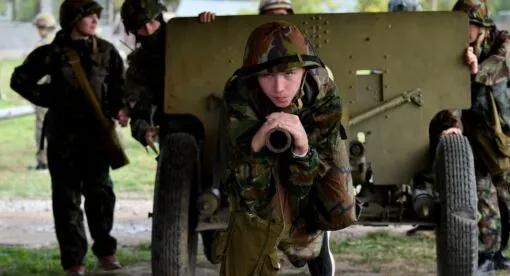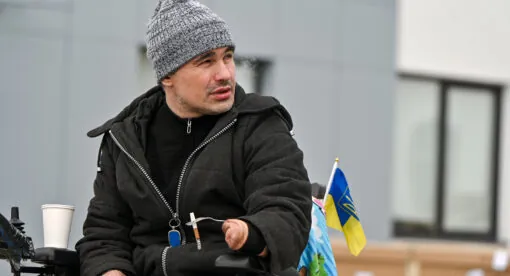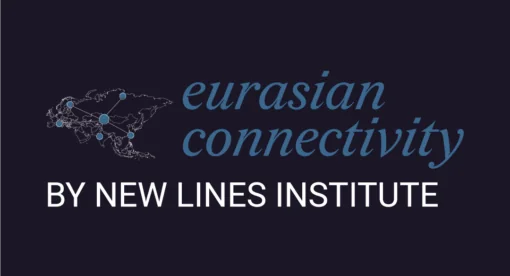The Weekly Forecast Monitor is a forward-looking assessment of geopolitical dynamics that are shaping the international system. To get more in-depth analysis of these issues and learn more about analytical products from New Lines Institute — including simulations, training sessions, and forecast reports — contact us at [email protected] and visit https://newlinesinstitute.org/analytical-products/. Download PDF version.
Global Hotspot Tracker
The Global Hotspot Tracker examines the outlook for key geopolitical hotspots around the world. (Go to the Global Connectivity Tracker)
Middle East
Summary – Tensions in the Middle East trended toward military and hybrid escalation scenarios, as Israel is preparing its ground offensive in Rafah to eliminate Hamas holdouts. Most recent reports and military movements within Israel indicate that the Israeli Defense Forces are ready for the offensive. Several attacks targeted U.S troops and bases across the region, and al-Houthi rebels resumed Red Sea attacks after a short lull. The U.S approved a funding bill that will provide Israel with $26 billion in military aid.
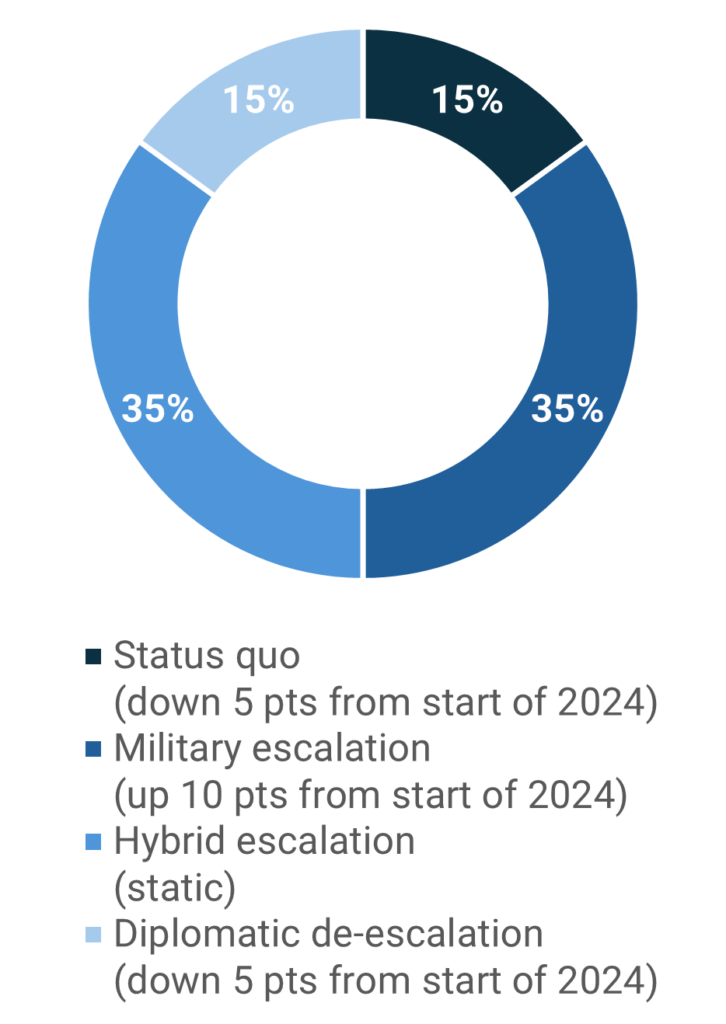
Military escalation scenario
- The IDF is ready for its major ground offensive in Rafah and can launch the operation once it gets government approval.
Risk level – high - Five rockets were launched against a U.S. base in northeastern Syria, marking the first attack on U.S. assets in months. A separate drone attack targeted U.S. forces at the base of Ein al-Assad.
Risk level – medium - IDF strikes killed two top Hezbollah commanders. The IDF also struck 40 Hezbollah targets in southern Lebanon. Hezbollah claimed its deepest attack into Israeli territory targeting a military base 15 kilometers from the Israeli-Lebanese border.
Risk level – medium
Hybrid escalation scenario
- Al-Houthi rebels resumed attacks on commercial vessels around the Bab al-Mandeb, ending a two-week lull.
Risk level – low - The U.K. joined other Western countries in applying sanctions against Iran’s drone and missile industries.
Risk level – low/medium
Diplomatic de-escalation scenario
- Israel’s war Cabinet has authorized negotiators to discuss the release of a fewer number of hostages in the truce’s first phase.
Opportunity level – low
Russia/Ukraine Conflict
Summary – The Russia-Ukraine conflict is trending toward military escalation as a long-stalled U.S. military aid package earmarking $60 billion for Ukraine was passed this week and met with warnings of escalation by Russian officials. The US also secretly provided long-range missile systems that already had been put to use by Ukrainian forces. Hybrid attacks against Ukrainian and Russian energy infrastructure continue, while Qatar mediated an agreement for the exchange of children displaced by the war.
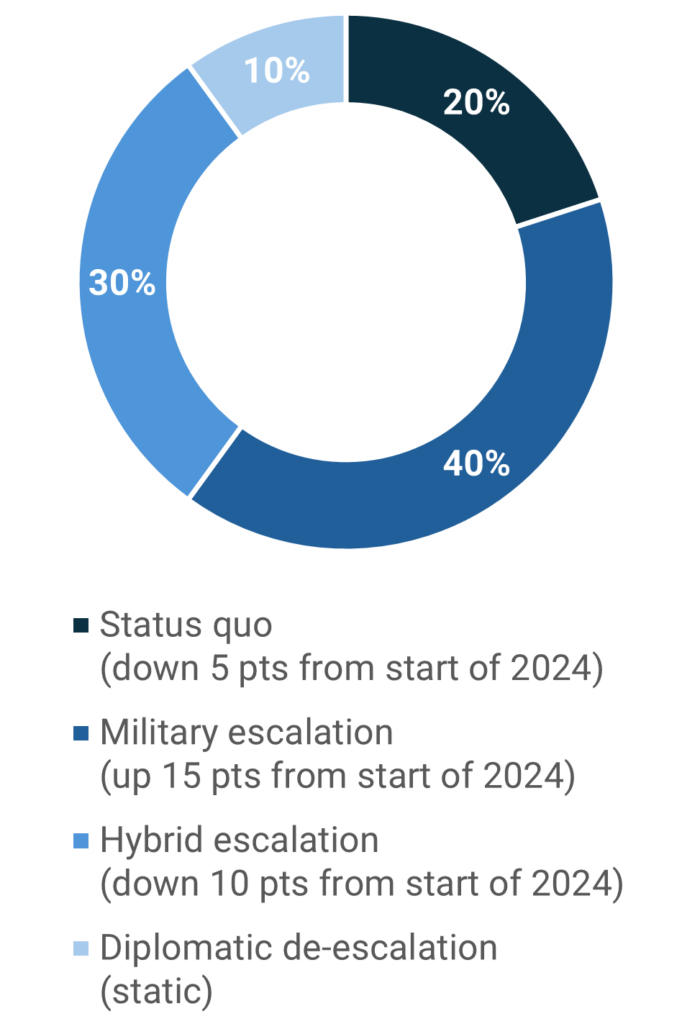
Military escalation scenario
- The U.S. passed a major military aid package which includes $60 billion in funding to Ukraine after months of delays in Congress. U.S. President Joe Biden said the measure would allow new weapons and equipment to arrive in Ukraine ”within days”.
Risk level – medium - Russian officials said that the U.S. military aid package would not improve Ukraine’s position on the front lines, while Russia’s defense minister said Russia would increase strikes on Ukrainian sites that store Western-supplied weapons.
Risk level – medium - The U.S. has covertly provided the long-range Army Tactical Missile System to Ukraine, which already has been used to strike targets deeper in Russian territory in recent weeks, U.S. officials said.
Risk level – medium - According to satellite imagery, China is providing moorage for a Russian cargo ship associated with arms transfers from North Korea at a shipyard in Zhejiang province.
Risk level – low
Hybrid escalation scenario
- Ukraine conducted drone attacks against energy facilities in eight regions of Russia.
Risk level – low - The Kremlin warned that moves by the U.S. to seize frozen Russian assets would prompt legal action and other forms of retaliation by Russia.
Risk level – medium
Diplomatic de-escalation scenario
- A gathering of national security advisers and other officials from both the G7 and Global South will be held in Doha to discuss a diplomatic settlement between Ukraine and Russia, in preparation for a high-level summit in Switzerland in June.
Opportunity level – low - A deal to exchange nearly 50 Ukrainian children displaced by Russia’s invasion of Ukraine was reached in facilitation by Qatari mediators.
Opportunity level – low
U.S./China/Indo-Pacific
Summary – Tensions in the Indo-Pacific trended toward hybrid and military escalation scenarios, as economic tensions between China and Europe intensified and multiple military drills took place in the region. The European Commission ordered raids of Chinese state-owned Nuctech offices, raising concerns of crackdowns against Chinese companies located in Europe. The U.S. conducted separate military exercises with the Philippines and South Korea. North Korea responded to the U.S.-South Korean exercises with the country’s first nuclear counterattack drills. China’s People’s Liberation Army announced the creation of three military units that will focus on cyber, space, and information operations. The recently passed U.S. defense spending measure will provide $8 billion in military aid to the Indo-Pacific region.
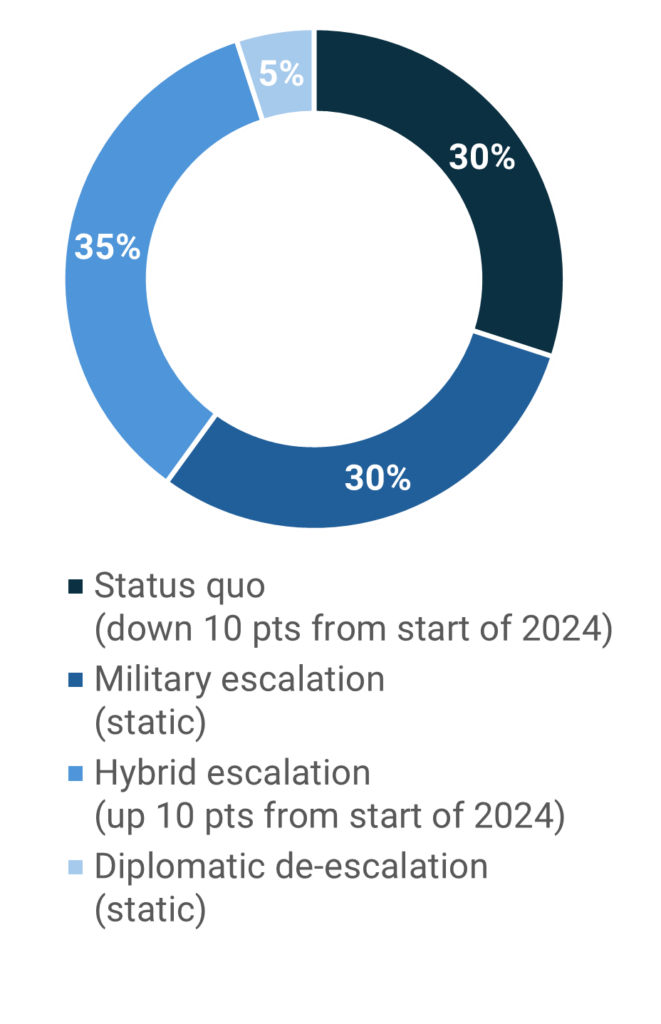
Military escalation scenario
- The U.S. and South Korea carried out the largest air exercises between the two countries, with more than 100 aircraft participating.
Risk level – low - North Korea responded to U.S. and South Korean joint exercises by simulating its “nuclear trigger” management system during the country’s first nuclear counterattack drills.
Risk level – medium - Russian Defense Minister Sergei Shoigu told members of the Shanghai Cooperation Organization they should participate in more military exercises in Asia to counter U.S. influence in the region.
Risk level – low
Hybrid escalation scenario
- Economic tensions between Europe and China have intensified after the European Commission and local police raided the Warsaw and Rotterdam offices of Nuctech, a Chinese state-owned security equipment supplier, as part of an investigation related to unfair trade practices. The EU also launched its first international procurement instrument investigation to examine the degree of access European manufacturers have to China’s medical device markets.
Risk level – medium - China’s Taiwan Affairs Office (TAO) threatened to impose tariffs on polycarbonate products imports from Taiwan if the Taiwanese government did not change its pro-independence stance.
Risk level – low - Biden signed a bill requiring parent company ByteDance to sell its stake in TikTok in the coming months. TikTok has stated it will challenge the law in court.
Risk level – low
Diplomatic de-escalation scenario
- No major indicators.
Global Connectivity Tracker
The Global Connectivity Tracker examines the impact of geopolitical dynamics on global energy security and the climate transition. (Go to the Global Hotspot Tracker)
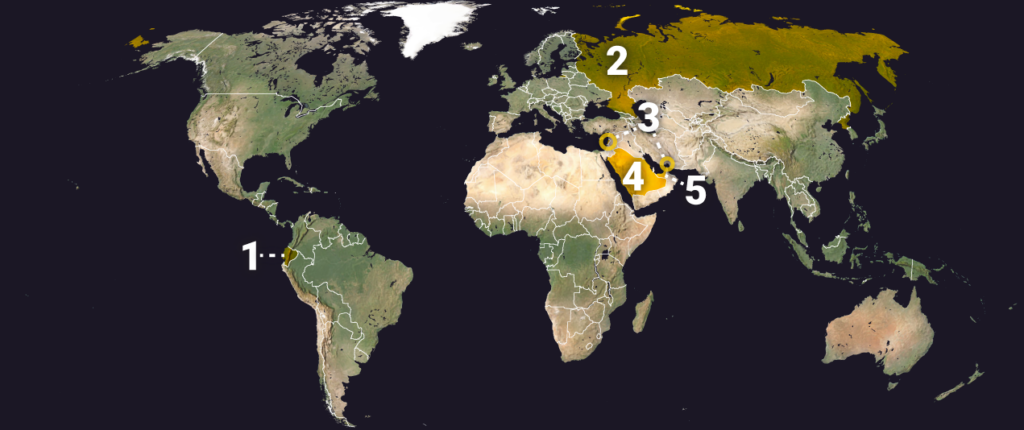
Energy/Climate
- Ecuador
What happened: Ecuador’s president declared a state of emergency and initiated power cuts in response to the country’s ongoing energy crisis, which has led to electricity rationing.
Significance/Outlook: Severe drought conditions exacerbated by the El Niño climate phenomenon have limited Ecuador’s hydroelectric power supply, prompting President Daniel Noboa to take this action. El Niño can intensify droughts, wildfires, heat waves, floods, and tropical storms. Since hydroelectric power installations are Ecuador’s main source of electricity, the country has been particularly affected by the ongoing drought. Decreased water levels in reservoirs are the direct cause of the present energy problems by reducing generation capacity. This state of emergency was declared to maintain public electricity service.
Risk level – medium - Russia
What happened: Russia’s worst floods in decades inundated Soviet-era uranium mines in the Kurgan region, raising concerns about radioactive and chemical pollution of the Tobol River in Western Siberia.
Significance/Outlook: The recent flooding raised concerns that radioactive materials may have been carried into the Tobol River, which might have serious effects for the hundreds of thousands of people living downstream. Uranium, like other heavy metals, is radioactive and toxic, so even in tiny amounts, it could contaminate drinking water. Testing would reveal the extent, if any, of radioactive contamination of the water.
Risk level – low/medium
- Israel/Iran/Strait of Hormuz
What happened: Following attacks between Israel and Iran in recent weeks, analysts warn of the potential closure of the Strait of Hormuz.
Significance/Outlook: The rising tensions between Israel and Iran are threatening the security of important waterways in the region, particularly the Red Sea and the Strait of Hormuz. The regional spillover of the Gaza/Israel war has led to shipping disruptions in the Red Sea, threatening world trade. The closure of the Strait of Hormuz, a Red Sea chokepoint through which 21 million barrels per day (bpd) of crude and other liquid energy cargoes pass, would affect energy producers and suppliers alike.
Risk level – low/medium - Saudi Arabia
What happened: Saudi Arabia is reevaluating its budget in response to its economic transformation projects that require significant foreign direct investments.
Significance/Outlook: For the first time in its history, Saudi Arabia finds itself in need to sell its bonds in riyals as a way to obtain more funding for its economic transformation plans. The Vision 2030 initiative originally targeted attracting $100 billion in foreign direct investment (FDI) annually by 2030, a goal that now appears increasingly unlikely to achieve. The International Monetary Fund highlighted that oil production cuts spearheaded by OPEC are impeding the inflow of much-needed financing into the country. To offset lower production volumes, Riyadh’s need for higher prices becomes more pronounced.
Opportunity level – low - United Arab Emirites
What happened: Unprecedented rainfall caused flash flooding in the United Arab Emirates that closed schools, roads, highways, and the international airport in Dubai.
Significance/Outlook: The UAE rainfall has been described as a historic weather event, dumping precipitation exceeding any documented over the past 75 years. Climate change has been blamed as the primary driver of more intense storms such as these. The emissions of greenhouse gases created by human activity have caused a global rise temperature and increase in humidity. These conditions can create storms and other forms of extreme weather that may become more powerful. The absence of drainage systems in large cities in the UAE is another factor that contributes to the prevalence of flash flooding. Future challenges include integrating climate engineering with urban development.
Risk level – low/medium
Key Stats of the Week
- Around 20.5 million barrels per day of crude oil, equivalent to 20% of daily global oil consumption, transit through the Strait of Hormuz.
- Around 80 million metric tons of liquefied natural gas, or 20% of global LNG flows, go through the Strait of Hormuz every year.
Source: Vortexa


